Introduction to planting and vegetation:
All types of plants, from grasses and wildflowers to scrubland, shrubs and trees are valuable and necessary. We all benefit from living amongst growing plants.
Well-designed green infrastructure helps to provide shelter in windy, hot or cold weather, reduces flooding, cleans water and air, provides us with food and pleasant places to be and provides habitats for thousands of other species.
Spaces without sufficient, well-designed planting are often inaccessible due to extreme temperatures, flooding, air pollution or obstruction from plant overgrowth.
We need to include planting in all active travel designs.
We must ensure that all planting near active travel routes is well designed and well maintained for accessibility.
At Wheels for Wellbeing we’re releasing a series of guidance sheets for local authorities, NGOs, other organisations involved in decisions about walking, wheeling and cycling schemes and for anyone with an interest in active travel infrastructure. Hopefully, these guidance sheets will help explain the reasoning behind different aspects of accessible infrastructure design.
These guidance sheets are aligned with our Guide to Inclusive Cycling (5th edition due autumn 2023). They may be printed, electronically distributed or quoted provided credit is given to Wheels for Wellbeing.
Download the planting and vegetation management guidance sheet as a Word document
Download the planting and vegetation management guidance sheet as a pdf
Planting design and maintenance for inclusive spaces:
Useful design principles:
- Include planting in all active travel schemes. Sustainable drainage options are especially important.
- Design so that mature planting will not encroach on paths or sight lines including for people on low recumbent cycles, including if weeds (e.g. brambles) grow, intentionally or otherwise.
- Consider factors such as toxicity, thorns, pollen, leaf size and fruits when placing species close to paths.
Useful maintenance principles:
- Plan maintenance schedules so:
- New growth is always cut back before it begins to narrow paths, especially at pinch-points and accesses. Consider growth rates carefully!
- Seasonal leaf clearance is carried out promptly.
- Monitor health of planting and ensure succession is built-in, for example consider planting new trees in avenues well before original trees need to be felled.
- Check path surfaces regularly for root damage and have repair options ready.
- Ensure everyone with responsibility for vegetation maintenance near paths, including private owners, understands these principles of access maintenance.
Planting 1:
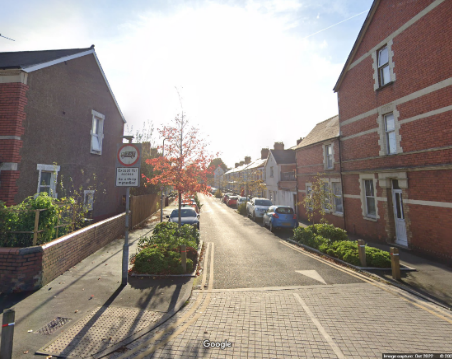
Well-designed planting is critical in developing attractive, climate-resilient places.
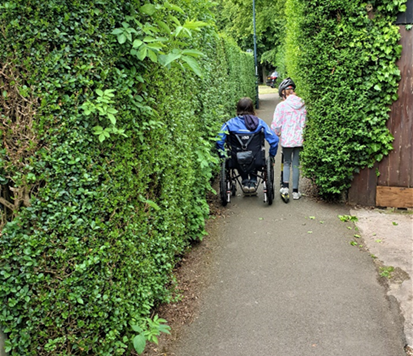
Poor design and maintenance obstruct access & sight lines & can cause punctures: Plants must not overhang paths at any time in their growth.
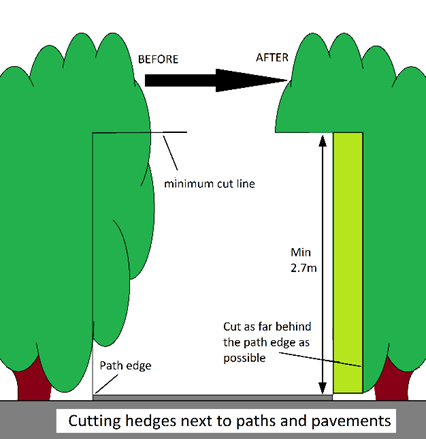
Cutting hedges next to paths and pavements
Legal & guidance position:
Equality Act (2010):
These duties are anticipatory: it is a legal requirement that reasonable adjustments to make a space accessible for Disabled people must be undertaken without any Disabled person having to ask for them.
Section 20: Requires those responsible for a space to anticipate and make reasonable adjustments to enable Disabled people access with no substantial disadvantage compared to non-Disabled people. This explicitly includes including altering and removing physical features which would otherwise exclude Disabled people.
It is not permitted to require a Disabled person to go a longer way around, ask for assistance or traverse a space much more slowly than a non-Disabled person would have to due to a physical barrier that could be removed.
Section 149 Public Sector Equality Duty: Requires public authorities to advance equality of opportunity for all people with protected characteristics, including Disabled people.
This goes beyond removing and minimising disadvantages, and additionally includes taking steps to promote equality by actively enabling Disabled people to participate in public life and activities, especially where Disabled participation is disproportionately low (e.g. active travel).
Cycle Infrastructure Design LTN 1/20:
Core design principles: “Networks and routes should be Coherent; Direct; Safe; Comfortable and Attractive”.
Summary principle 13: “As important as building a route itself is maintaining it properly afterwards.”
Access needs maintenance:
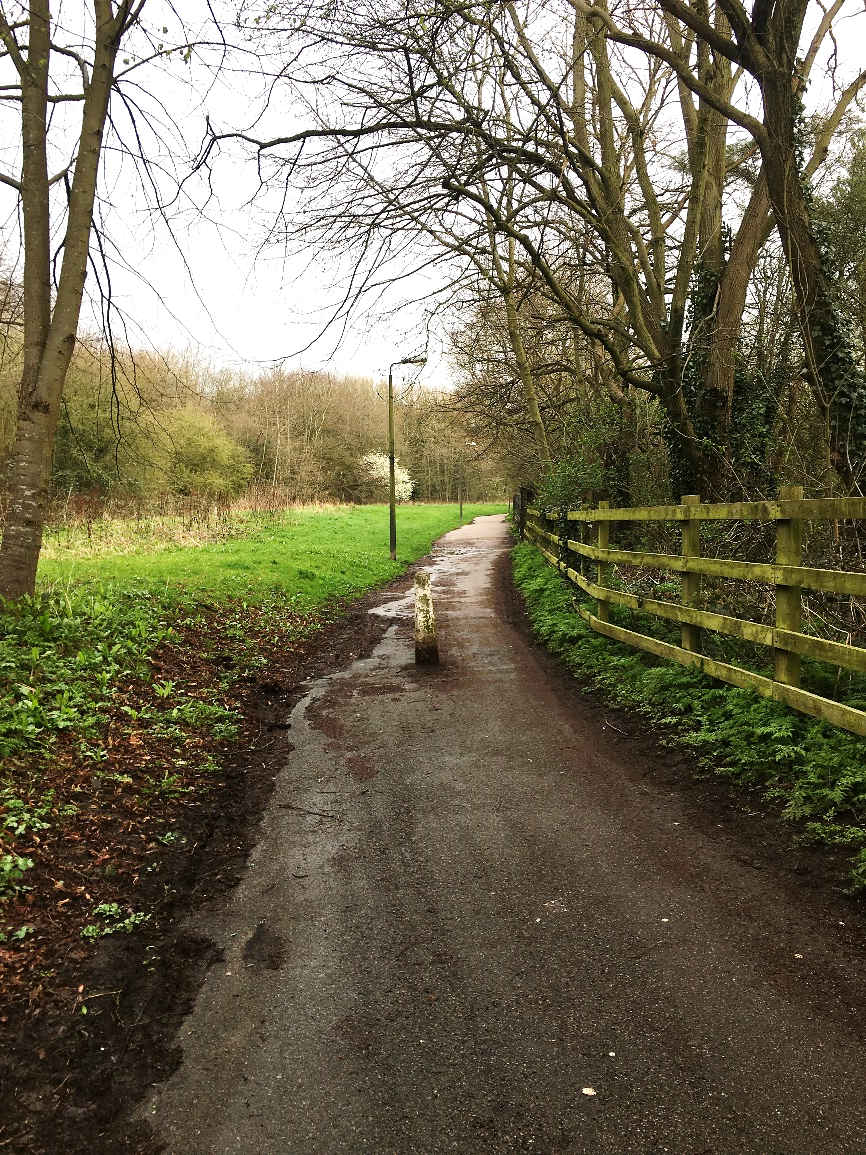
Insufficient maintenance narrows path to <75cm either side of a bollard. Spring growth on right of path will close the wider access within 8-12 weeks unless cut.
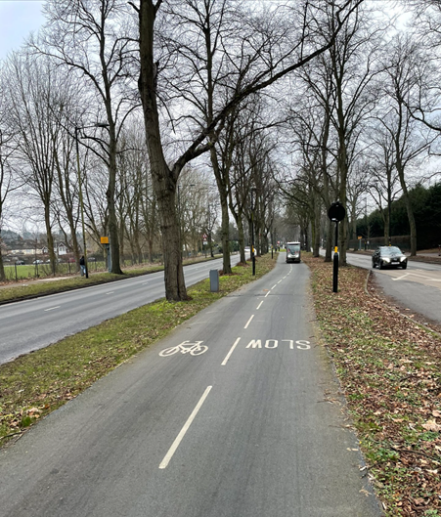
Well-designed planting between carriageways and active travel routes protects people from vehicle danger, dust and spray while keeping sight lines open.
References/Further reading/Resources:
- Equality Act (2010): https://www.legislation.gov.uk/ukpga/2010/15/contents
- LTN 1/20 Cycle infrastructure design: https://www.gov.uk/government/publications/cycle-infrastructure-design-ltn-120
- Wheels for Wellbeing Guide to Inclusive Cycling (4th edition, 2020): https://wheelsforwellbeing.org.uk/campaigning/guide/
